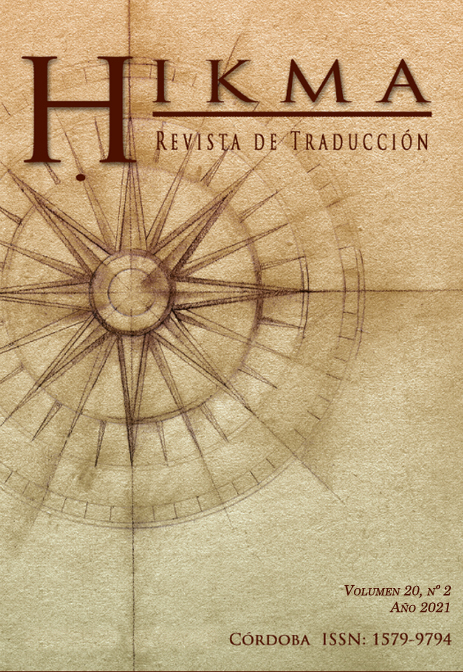Metaphors and the Degree of Conventionality in Translation of Prose Fiction: A Fraction of the Whole in Focus
Contenu principal de l'article
Résumé
The idea of metaphor classification is regarded as how felicitously they are entrenched in everyday language spoken by ordinary people. Metaphor conventionality can be regarded as a scale whose opposite ends constitute conventional and creative metaphors. Logic indicates that the majority of linguistic metaphors are well-worn and conventional rather than novel, since an excess of novel metaphors may remarkably bring about “communicative surprise” (Rabadán Álvarez, 1991) thus increase cognitive processing time and even hinder perceiving. Metaphorical creativity, as the other extreme of the scale of conventionality, can be looked at as the use of conceptual metaphors and/ or their linguistic manifestations that are creative or novel. This study seeks to scrutinize the scale of conventionality in the Persian translation of A Fraction of the Whole. MIP known as Metaphor Identification Procedure put forward by the Pragglejaz Group (2007) was employed in the study to identify metaphors. The findings reveal that, sometimes, the metaphors used in L1 are novel or creative, but the translator draws upon conventional or entrenched ones in L2, or vice versa. The aim is to show the translator's choice of metaphor in terms of a conventionality scale using some previous cognitive models in this regard.
Téléchargements
Details de l'article

Ce travail est disponible sous licence Creative Commons Attribution - Pas d’Utilisation Commerciale - Partage dans les Mêmes Conditions 4.0 International.
Les auteurs qui publient dans cette revue acceptent les conditions suivantes :
- Les auteurs conservent les droits d'auteur et accordent à la revue le droit de première publication du travail simultanément sous une Licence Creative Commons Attribution, permettant à d'autres de partager le travail en reconnaissant la paternité du travail et sa publication initiale dans cette revue.
- Les auteurs peuvent conclure des accords contractuels supplémentaires séparément pour la distribution non exclusive de la version publiée du travail dans la revue (par exemple, l'envoyer à un référentiel institutionnel ou le publier dans un livre), avec une reconnaissance de sa publication initiale dans cette revue.
- Il est permis et encouragé aux auteurs de publier leurs travaux en ligne (par exemple, dans des référentiels institutionnels ou sur leur site Web) avant et pendant le processus de soumission, car cela peut entraîner des échanges productifs, ainsi qu'une citation plus précoce et plus importante du travail publié (voir L'effet de l'accès ouvert).

